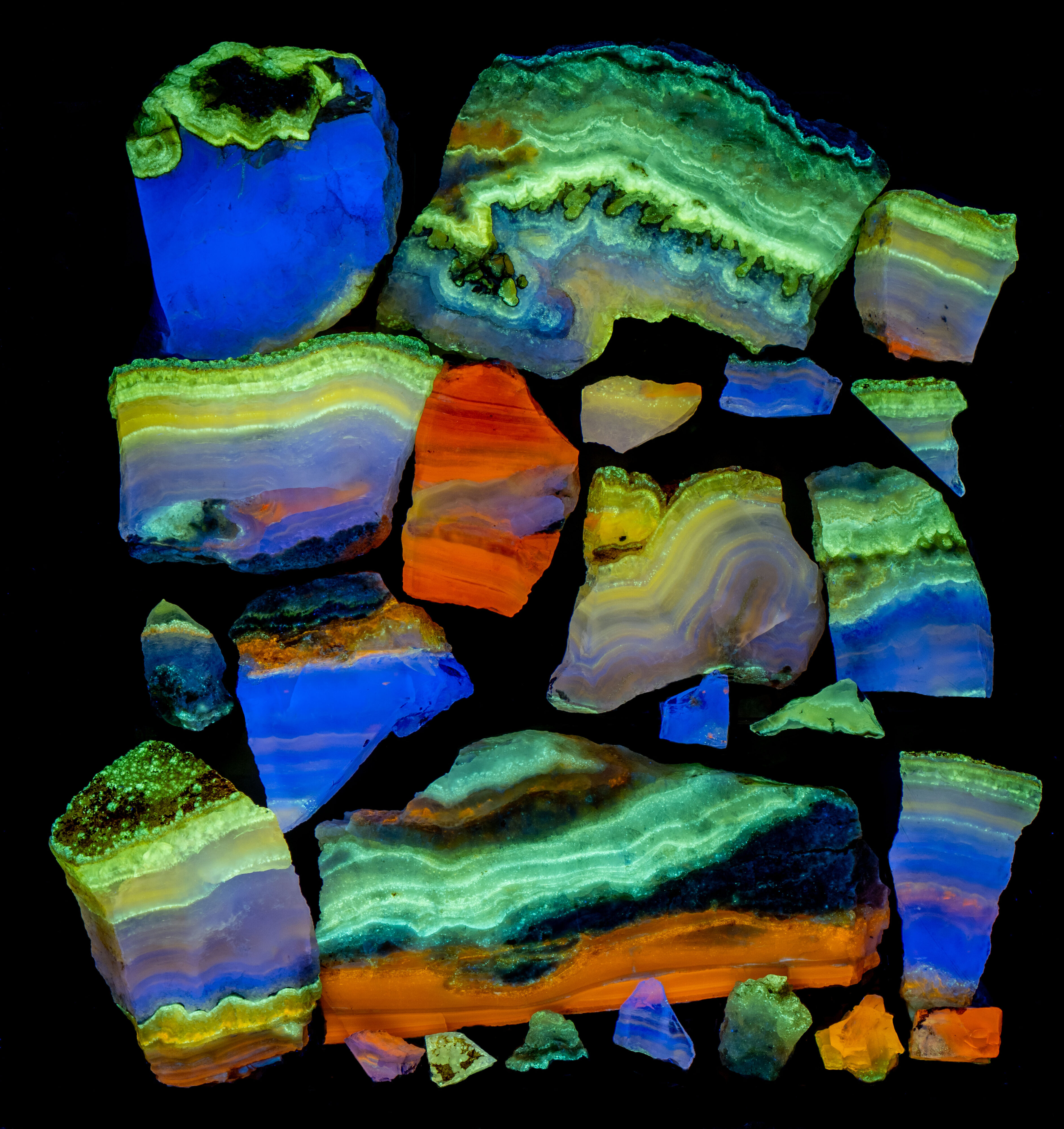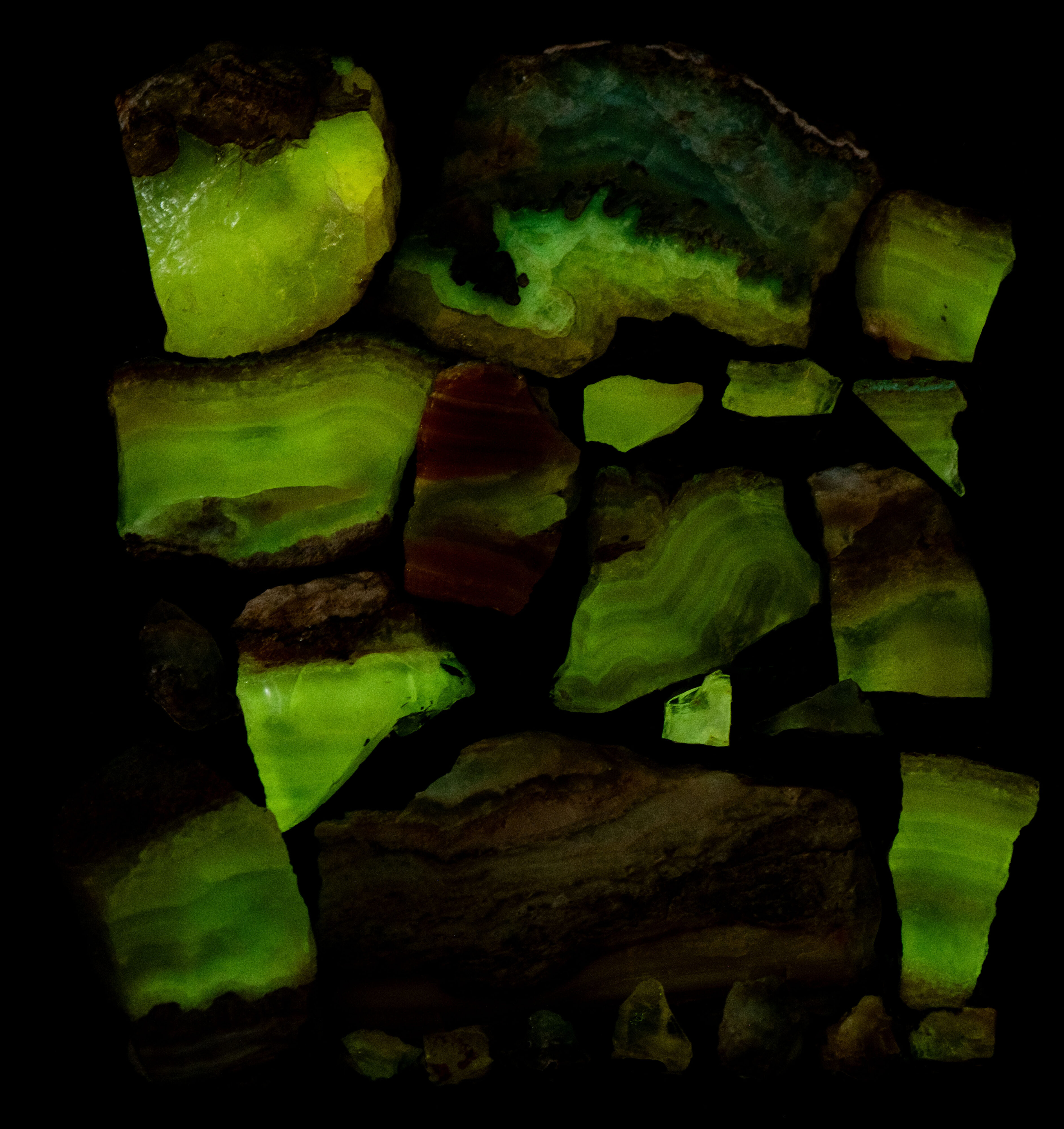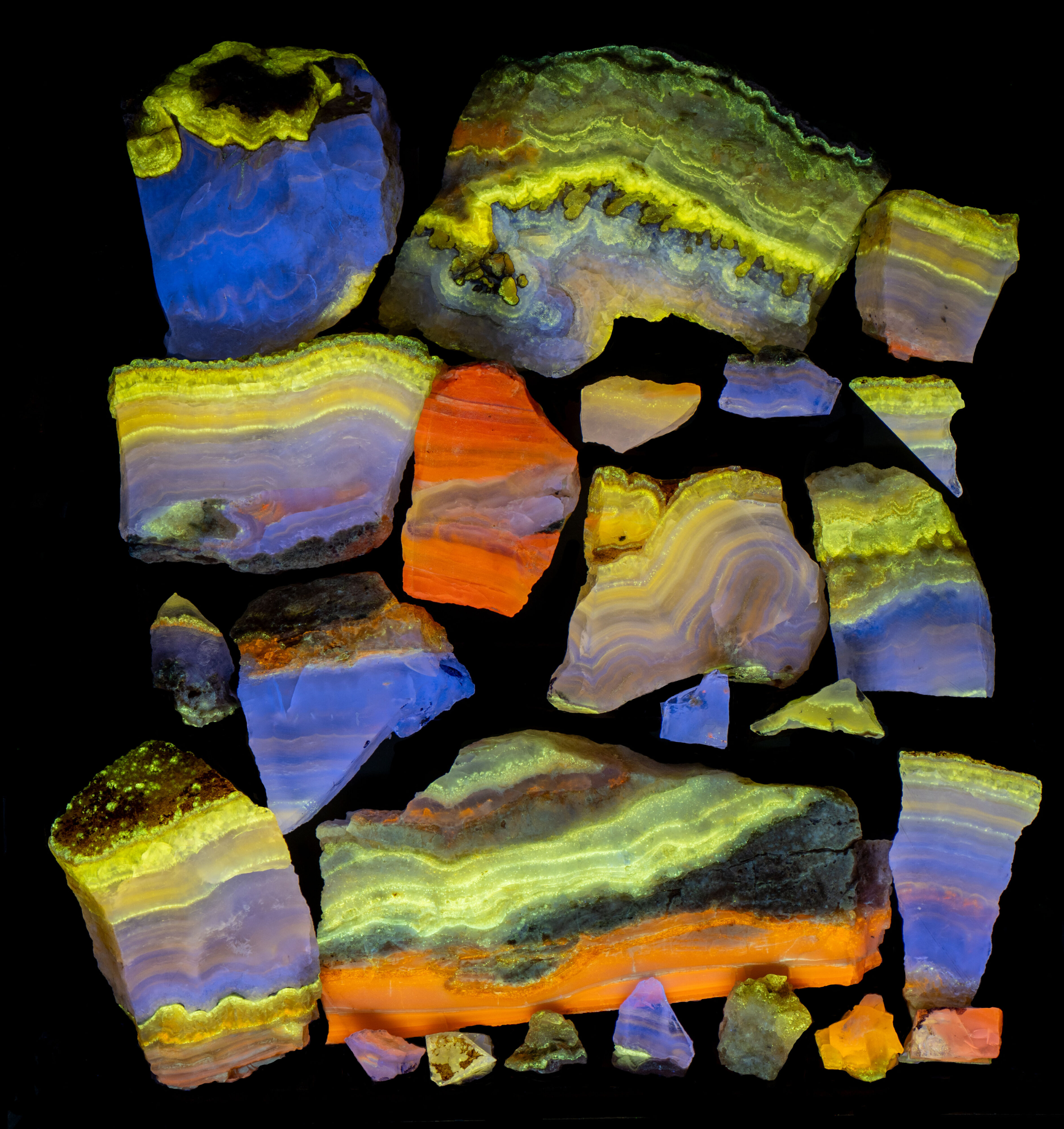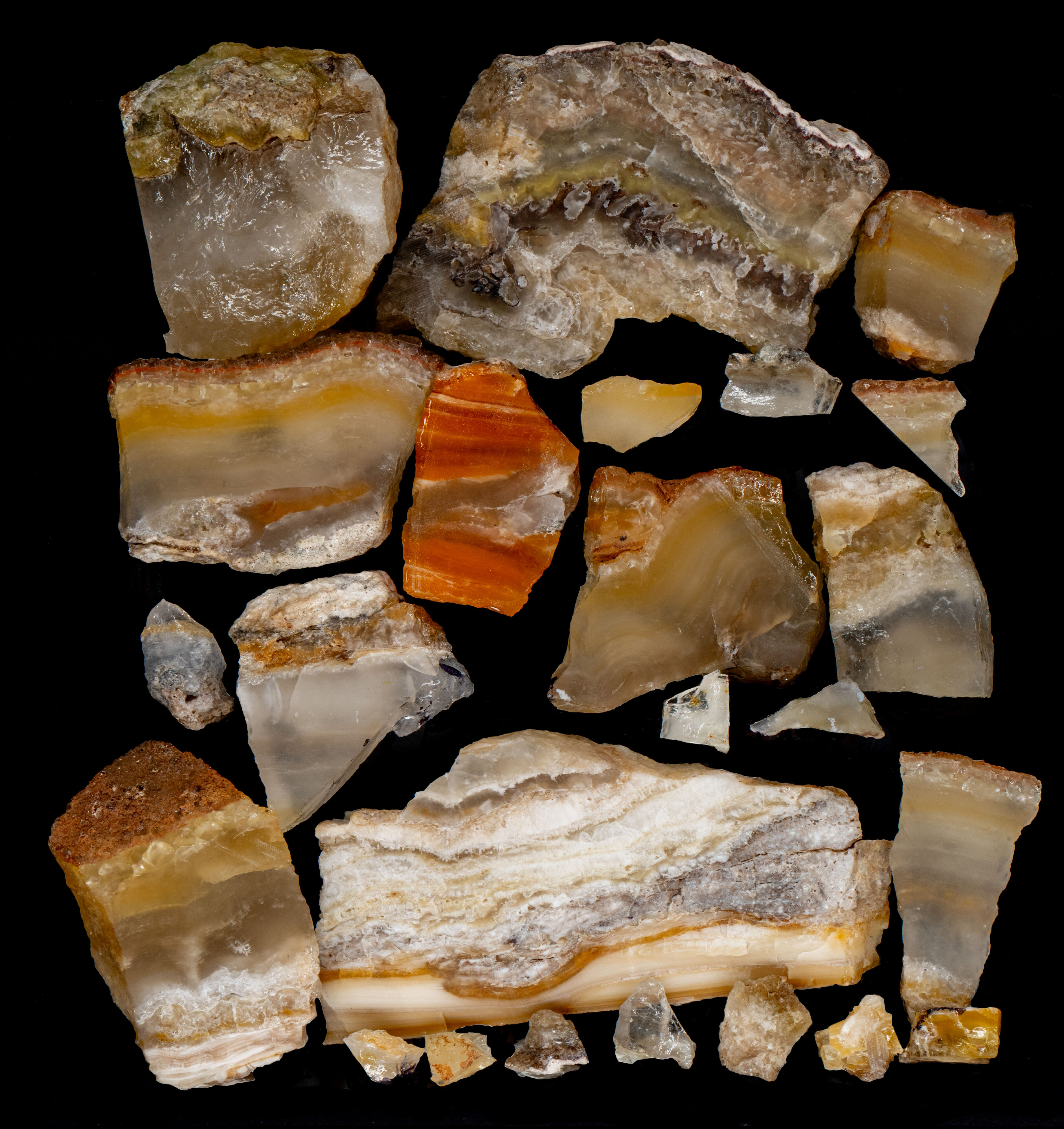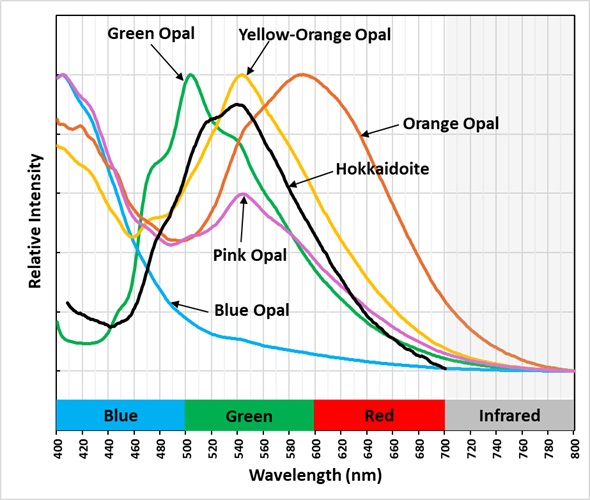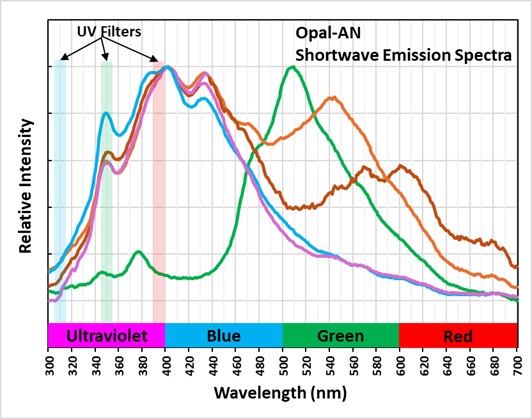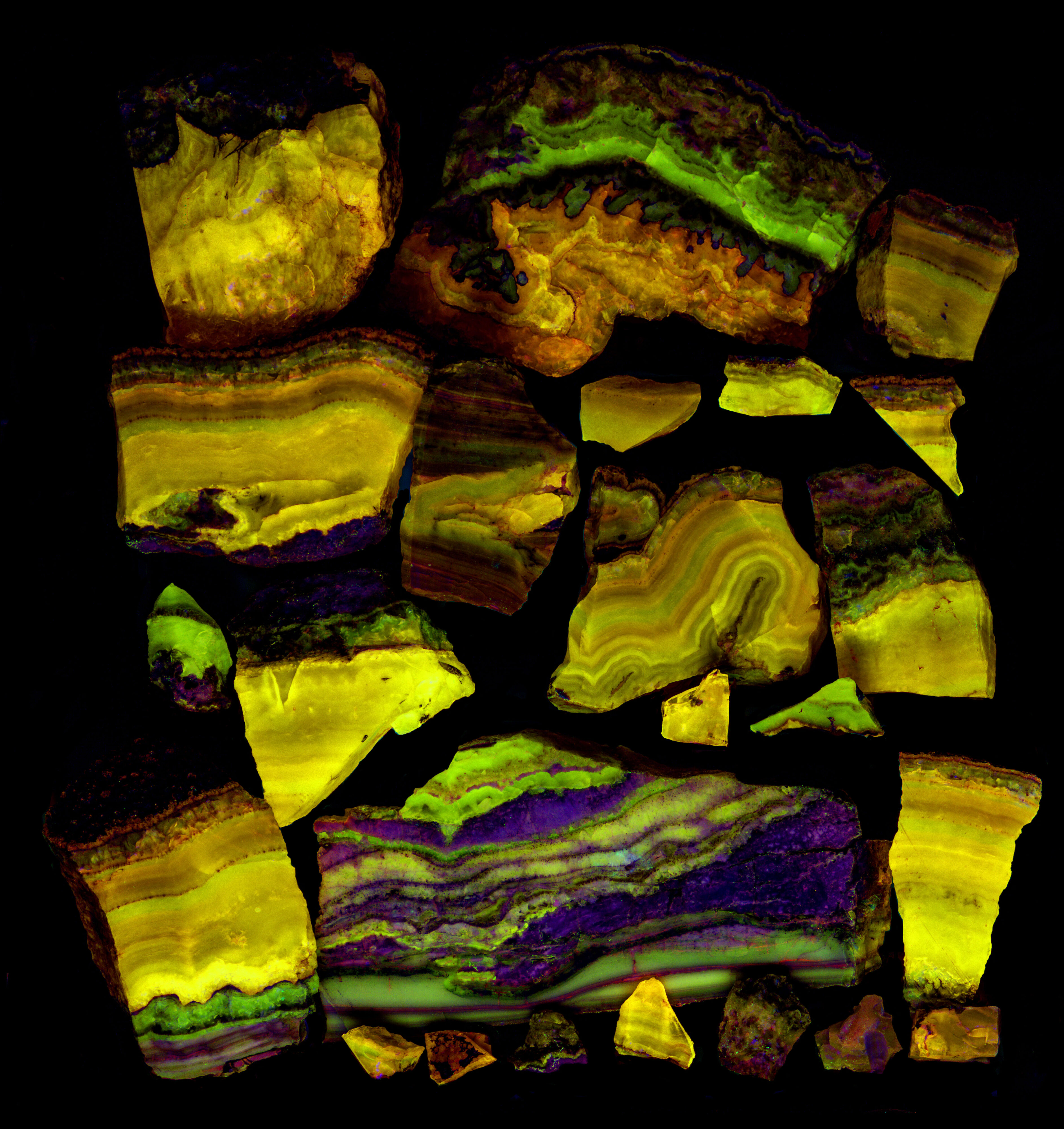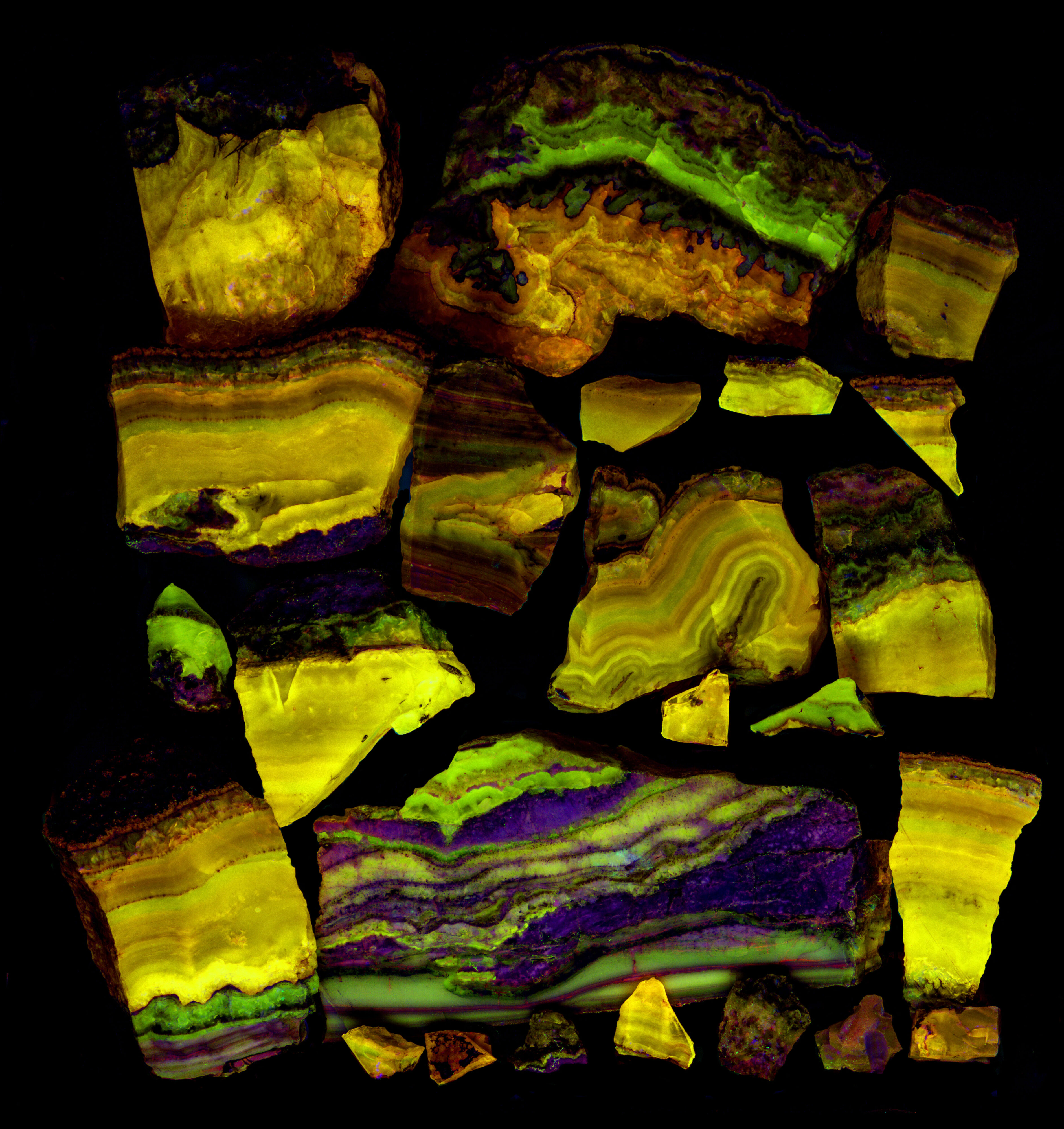Small Display of Hokkaidoite and Opal-AN from Japan
Contributed by: Michael Crawford
Date: Aug 12th, 2025
Locality: Shikaribetsu Lake, Shikaoi (Shikaoi-Ch?), Kato District, Tokachi Subprefecture, Hokkaid? Prefecture, Japan (See on Mindat)
Size: 13 x 15 cm
Description:
This is a small display of hokkaidoite and opal-AN pieces from Shikaribetsu Lake, Kato District, Tokachi Subprefecture, Hokkaido Prefecture, Japan. Hokkaidoite is an organic mineral (C22H12) with a monoclinic crystal lattice. The hokkaidoite occurs as small dendrites encased in a layer of opal-AN. Hokkaidoite is not present in all of the specimens in the display. The dendrites appear as yellow green specks in yellow opal-AN when exposed to longwave UV illumination. The yellow green fluorescence is caused by the polycyclic aromatic hydrocarbon (PAH) structure of hokkaidoite. The PAH structure has a high number of conjugated double bonds that are easily excited by UV light.
The hokkaidoite fluoresces yellow green under all wavelengths of UV light. It is brightest under longwave light. Opal-AN fluoresces blue, yellow, orange, pink and green. The opal-AN is also fluorescent under all wavelengths of UV light and is brightest under longwave light. The opal-AN colors change slightly under shortwave light.
Some of the opal is phosphorescent after longwave illumination. The blue, fluorescent opal has the strongest phosphorescence. The phosphorescence has a yellow, green color independent of the original fluorescent color. The hokkaidoite and orange, fluorescent opal-AN are not phosphorescent. I could not see any phosphorescence in these specimens after exposure to shortwave illumination. Organics are likely activators for the opal-AN fluorescence and phosphorescence. The third image shows the longwave emission spectra of the hokkaidoite and the different opal-AN colors.
The shortwave fluorescent image shows a slight change in the color of the specimens. The shortwave emission spectra of the opal-AN show that most of the opals have ultraviolet fluorescence in addition to the visible fluorescence. Hokkaidoite does not fluoresce in the ultraviolet region.
The last image shows a false color image of the ultraviolet fluorescence. The false color image is composed of images taken with narrow-band filters centered at 394nm, 350nm and 310nm. These filters are shown on the plot of emission spectra. The false color image is composed of the 394nm image assigned to red, the 350nm image assigned to green and the 310nm image assigned to blue. The blue, fluorescent opal-AN has the brightest ultraviolet fluorescence. The orange and yellow fluorescent opal-AN has little to no ultraviolet fluorescence.
The display is 15 cm by 13 cm.
Summary of luminescence responses:
Hokkaidoite (Mindat) (RRUFF)
- Fluorescence under Longwave (365nm LED) UV light: Yellow
- Fluorescence under Longwave (365nm LED) UV light: Blue
- Fluorescence under Longwave (365nm LED) UV light: Pink
- Fluorescence under Longwave (365nm LED) UV light: Green
- Fluorescence under Longwave (365nm LED) UV light: Yellow
- Fluorescence under Longwave (365nm LED) UV light: Orange
- Afterglow after exposure to Longwave (365nm LED) UV light: Yellow

